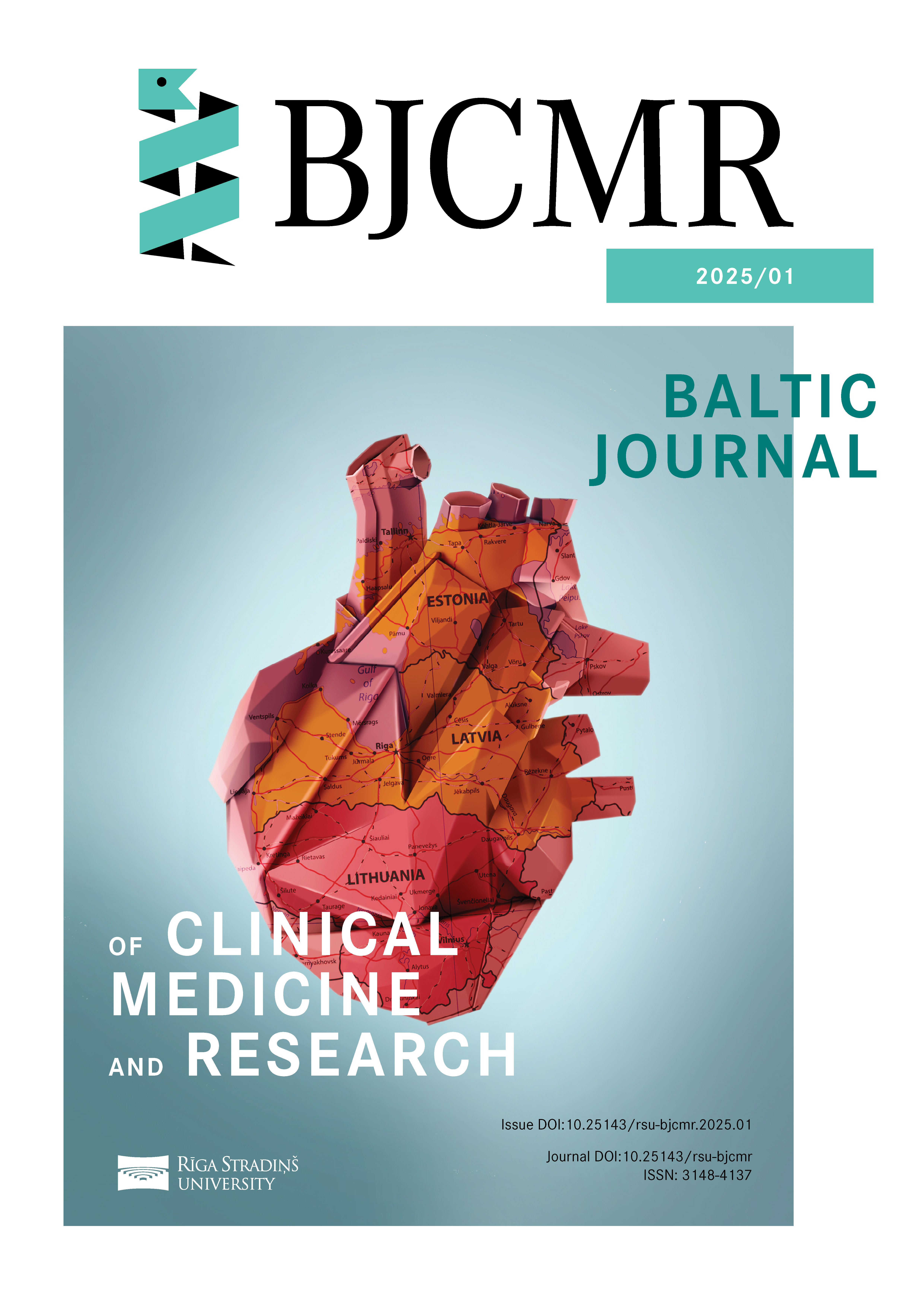Recurrent Hyperbilirubinemia: The Diagnostic Challenge of Benign Recurrent Intrahepatic Cholestasis
DOI:
https://doi.org/10.25143/rsu-bjcmr.2025.01.019-022Abstract
Keywords. Benign recurrent intrahepatic cholestasis, hyperbilirubinemia
Introduction. Benign recurrent intrahepatic cholestasis (BRIC) is a rare autosomal recessive disease characterized by repeated episodes of conjugated hyperbilirubinemia, jaundice, pruritus, and general fatigue. Episodes last for weeks or months, followed by a complete clinical, biochemical, and histological remission period.
Case description. In 2013, a 19-year-old woman was hospitalized with progressive jaundice and pruritus with negative diagnostic results for most frequent aetiologies and a liver biopsy that showed intrahepatic cholestasis without fibrosis. Episodes like this occurred 14 times during 2013 to 2022, but the diagnosis wasn’t made until 2016, when genetic analyses confirmed the diagnosis of benign recurrent intrahepatic cholestasis type 2 with heterozygote mutations in the ABCB11 gene. Patient improved on treatment with multiple plasmapheresis and ursodeoxycholic acid, although episodes still repeat once to several times a year and has a pronounced impact on quality of life. There is no evidence of changes in biochemical and histological values during remission.
Summary. BRIC is an autosomal recessive disease with mutations in genes encoding hepatocyte bile duct membrane proteins most commonly in homogenous form, only 30% of cases have multiple heterozygous changes. The case demonstrates unusual example of BRIC with heterozygous mutations in only one hepatocyte bile duct membrane protein encoding gene and explicit clinical symptoms. It is believed that multiple heterozygous changes determine the severity of the clinical manifestations of the patient concerned, but this example proves otherwise.
Conclusions. BRIC is a rear disease, to label a rare disease, practically all causes of pre-hepatic, hepatic and post-hepatic jaundice should be considered. Only after numerous episodes of relapses and remissions it could be asserted that this disease has a recurring pattern. Although there is currently no specific treatment available to prevent recurrence, the disease does not progress and has a benign course.
Downloads
Published
Issue
Section
License
Copyright (c) 2025 Baltic Journal of Clinical Medicine and Research

This work is licensed under a Creative Commons Attribution-NonCommercial-ShareAlike 4.0 International License.


